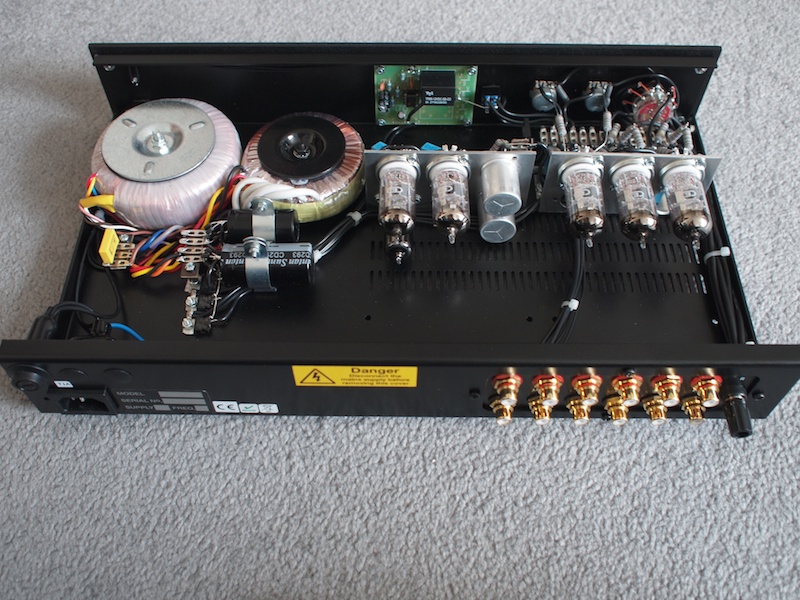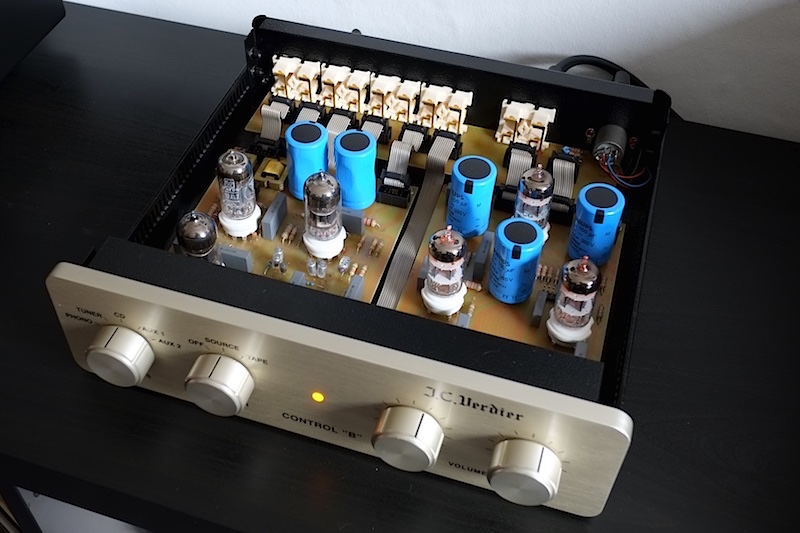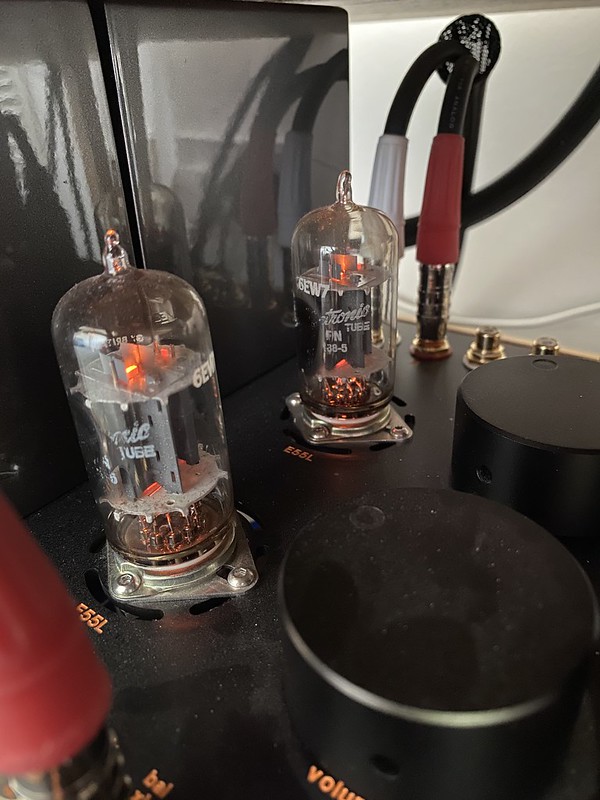Obviously, again, there is far from a simple answer, but modern SS power amp's have input impedance values of 20K and thereabouts, as you have said, but what would most valve pre's be happier with? OK, more, but realistically?
Where were/are valve power amp' input impedances pitched? That is assuming that they are aimed at operating with a valve pre'. Or is the "matching" achieved between valve pre' and power achieved in some other way?
I can only generalise in answering this as there are so many variables.
Valves are high input impedance (Zin) devices and it is hard to imagine any reason for a valve power amp to be less than say 100K Zin. 1M is not unusual... Almost all then will be 100K or more and very easy to drive. They tend to not have input capacitors/RC network to ground as well and the few that do tend to have very small caps only. I'll come back to this.
SS power amps can vary from 10K or less and up to about say 100K for ones with bipolar transistor inputs but ones with FET inputs an be as high as valves. Most (big generalisation here) SS power amps are between 20K and 68K with around 50K being about the most common. And yes folks I'm sure you can find examples of 5K and 2M if you look hard enough...
Many, but not all, have an RC filter at the input which rolls of HF above say 35KHz - 100KHz. This is a resistor in line with the input socket and a capacitor to ground after it.
The very high Zin of valve power amps puts very little load on the pre amp, it draws very little current from it and doesn't "pull down" the output of the pre amp.
Imagine the waveform from the pre amp having to carry a weight up and down with it due to the load of the power amp and you're getting there! Lower Zin of power amp means "more weight" so the signal is reduced in amplitude.
Now this is where it (hopefully) gets interesting

If the pre amp was a simple passive then it is nothing but a resistance and won't generate distortion in driving a load. The load of the power amp will drag it down in amplitude as described above and that is all it will do.
A
typical valve line stage though, and especially ones such as the Croft 25 and Audionote, not only have a Zout around as high as a 20K passive but
their ability to "push" is quite a bit different to their ability to "pull".
Now what this means is that when the load of the power amp input pulls down the waveform from the pre amp
it pulls down the top of the waveform more than it does the bottom (think of a sine wave with an imaginary centre line here. above the line = pull and below it = push)... hence it distorts the shape of the waveform.
In this most basic form I'm describing 2nd harmonic distortion, which will
usually predominate in most simple valve stages (but doesn't have to).
So..... the lower the Zin of the power amp the higher the distortion.
The input RC filter on many SS amps can is some cases be severe enough that some valve pre amps will be "pulled down" more at HF as this RC filter "adds more load" as frequency increases, this is how it works as a filter in fact but with too high Zout from a pre amp the filter may be starting down as low as say 14Khz rather than the intended 40Khz when its used with a preamp that has a Zout of only 1K or less, as is typical with an active SS pre amp.
Hence "how low Zin a SS power amp can I use with a valve pre amp?" is kind of "how much distortion do you want/can you tolerate?"
To be less flippant and give at least some guidance on this then, 100K is great, more can only be good but is pretty academic by the time it is 100K. 50K will be fine with most valve pres but distortion will typically have risen from say 0.02% with 100K to say 0.04 - 0.1% but should be fine still. By 20K distortion will often be up at say 0.2 - 0.7% ish... which some may like!
I must stress that valve pres vary considerably in Zout and load driving ability though. The above is true for simple one valve line stages that are not cathode followers. For most cathode followers (and probably the majority of single valve line stages are a cathode follower) it works exactly the same as above but Zout is usually low enough to drive even 20K with little issue. If the cathode follower is an ECC83 then 20K is pushing it but will probably still be fine. Generally if your one valve line pre has no gain then you can assume it is a cathode follower.




 Untitled
Untitled Untitled
Untitled